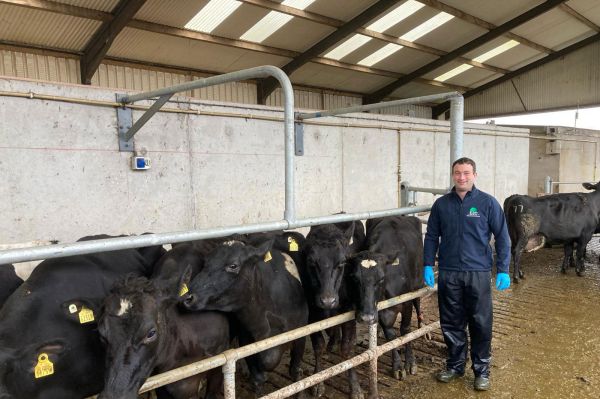PARTNER PROMOTION
Supporting transition cows: a vet’s approach

Moyne Veterinary Hospital in Enniscorthy, Co. Wexford, is an independently owned mixed practice with a thriving large-animal clinic, operating alongside its small-animal hospital and equine unit. Don is one of the large-animal vets working mostly with dairy, beef and sheep clients in and around the Enniscorthy area.
“It’s a very busy time of the year and no two days are the same,” says Don. ”The last 10 years have seen many dairy herds increase in size, which brings its own challenges. A lot of our time is spent trying to prevent disease at the herd level and where it does occur, we work to treat the issue, prevent disease spread, and promote a quick recovery.”
Ketosis
Don explains that one example of this preventative approach is with ketosis, a condition that occurs when the animal’s total dietary intake fails to meet its energy requirements. The cow begins to draw reserves from her body, creating a continuous state of negative energy balance (NEB). Unfortunately, the ketones released as part of this process suppress the cow’s appetite, creating a vicious circle that results in weight loss and a significant drop in milk yield.
“There is a range of contributing factors that predispose some cows and herds to ketosis,” says Don. “Body condition score of cows at calving, particularly fat cows, can increase risk of developing ketosis. Cows carrying twins or that are stressed following a caesarean or difficult calving can also be at risk. I recommend that farmers use a Ketonor+ bolus on these cows.”
Two Ketonor+ boluses given to ‘at risk’ cows (typically two to seven days after calving) provide a readily available energy source, Don says. This breaks the cycle of ketone production, helping the cow to start eating, regain her energy levels, and increase milk production.
“We would have used propylene glycol in the past, but it isn’t always easy to find the time for the required twice-daily follow-up treatments during the busy calving period. The bolus is much easier, and you know that’s the full treatment given,” adds Don.
Energy to aid recovery
Although energy imbalances are usually seen during early lactation, they can occur any time that the cow is off her food. Don says he also uses Ketonor+ as a supportive therapy in sick or convalescent cows, alongside non-steroidal pain relief and antibiotics.
“I use the boluses a bit more generally on cows that are sick and might be off their food as a result. At this time of the year, I’m often treating cases of metritis or mastitis and as part of their treatment I’ll give a bolus as well as non-steroidal anti-inflammatory drugs (NSAIDs) and antibiotics. Also, following left displaced abomasum (LDA) surgery, I routinely use Ketonor boluses. It helps recovery by giving cows an energy boost until their appetite comes back.”
Early intervention
“Vets and farmers are aware that early lactation is a risk period for sickness and disease in all dairy herds. As an industry, we’re increasingly adopting technology like collars, tags and boluses that allow us to monitor subtle physiological changes,” according to Maura Langan, Norbrook commercial and technical manager (farm animal).
“Technology can indicate very early changes to rumination, activity and body temperature and is able to alert the farmer before the cow displays any visible signs of disease. Although it can’t offer a definitive diagnosis, feed intake and energy requirements are so finely balanced in those first weeks that these cows are also at risk of ketosis. In cases like these, early intervention with a bolus is appropriate.
“Of course, this technology is no replacement for good stockmanship and veterinary care, but it can allow for early intervention with supportive therapies and support better clinical outcomes.”





